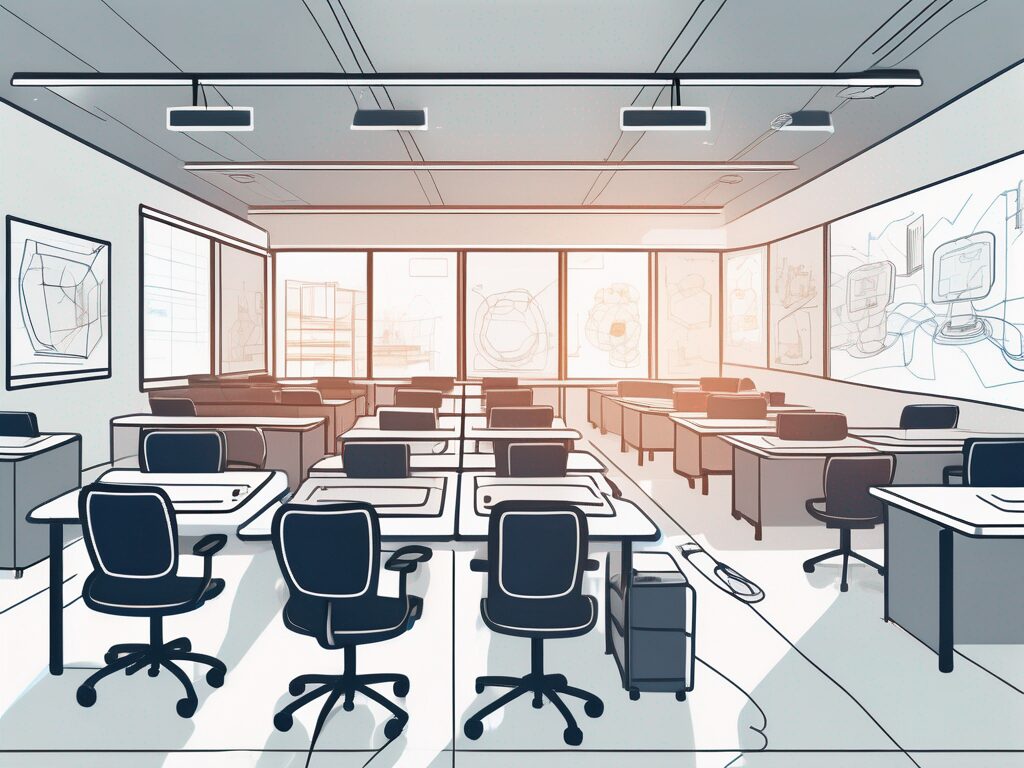In the realm of education, Singapore has always been a trailblazer, consistently ranking among the top in global education rankings. A key factor in this success is the nation’s willingness to embrace technology in the classroom, using it as a tool to enhance teaching and learning. This article will delve into four methods through which technology is being integrated into Singapore classrooms, shedding light on how these practices are shaping the future of education in the Lion City.
1. Interactive Whiteboards
Interactive whiteboards have revolutionised the traditional chalk-and-talk method of teaching. These high-tech boards, which are essentially a large interactive display that connects to a computer and projector, are now a common sight in Singapore classrooms. They allow teachers to present information in a dynamic and engaging way, transforming the classroom into an interactive learning environment.
For instance, instead of merely explaining a concept, a teacher can use the interactive whiteboard to display diagrams, videos, and animations, making the lesson more visually appealing and easier to understand. It’s akin to swapping a black-and-white television for a high-definition colour one – the difference in the learning experience is stark.
Furthermore, these boards are not just for teachers. Students can also interact with the content displayed on the board, promoting active learning. It’s a far cry from the passive learning experience of yesteryears, where students were mere spectators in their own education.
2. Learning Management Systems
Learning Management Systems (LMS) are another technological innovation that has found its way into Singapore classrooms. These are online platforms that enable the delivery of learning materials, facilitate communication between teachers and students, and provide tools for assessment and feedback.
Think of LMS as a virtual classroom. Just like in a physical classroom, teachers can share notes, assign homework, and give tests. But unlike a traditional classroom, an LMS is accessible anytime, anywhere. It’s like having a 24/7 classroom at your fingertips, providing flexibility for both teachers and students.
Moreover, an LMS allows for personalised learning. Teachers can track each student’s progress and tailor their teaching accordingly. It’s like having a personal tutor for each student, ensuring that no one is left behind in the learning journey.
3. Mobile Learning
Mobile learning, or m-learning, is a method of learning that utilises mobile devices such as smartphones and tablets. In Singapore, many schools have adopted a Bring Your Own Device (BYOD) policy, encouraging students to use their personal devices for learning.
Imagine being able to access your textbooks, notes, and assignments on your smartphone. It’s like carrying an entire library in your pocket. This convenience makes learning more accessible, allowing students to study whenever and wherever they want.
Moreover, mobile learning supports collaborative learning. Students can easily share resources, discuss ideas, and work on projects together, even when they are physically apart. It’s like having a virtual study group, fostering a sense of community among learners.
4. Gamification
Gamification involves the use of game elements in non-game contexts, and it’s a method that’s gaining popularity in Singapore classrooms. By turning learning into a game, teachers can make lessons more engaging and enjoyable.
Imagine learning maths through a fun and competitive game. Instead of dreading the subject, students would look forward to it. It’s like turning a chore into a hobby, making learning a pleasure rather than a task.
Moreover, gamification can motivate students to learn. By rewarding students with points, badges, or levels for their learning achievements, teachers can tap into their innate desire for competition and recognition. It’s like turning learning into a sport, where students strive to outdo each other in their quest for knowledge.
In conclusion, technology is reshaping education in Singapore, transforming classrooms into dynamic and interactive learning environments. As the nation continues to embrace these technological innovations, one can only imagine what the future of education in Singapore will look like.
Elevate Your Teaching Career with IPGCE
As technology revolutionizes Singapore’s classrooms, educators must stay ahead of the curve. The International Postgraduate Certificate in Education (iPGCE) is your gateway to mastering these innovations and propelling your teaching career to new heights. Overcome the barriers of stringent qualifications, embrace career progression opportunities, connect with a global network of professionals, and gain a deep understanding of international curricula. With flexible online study options tailored for working teachers, the iPGCE is the practical solution to advancing your professional development. Don’t let inadequate credentials hold you back. Join the UK’s #1 Teacher Training Course today and become a leader in the transformative world of education.

